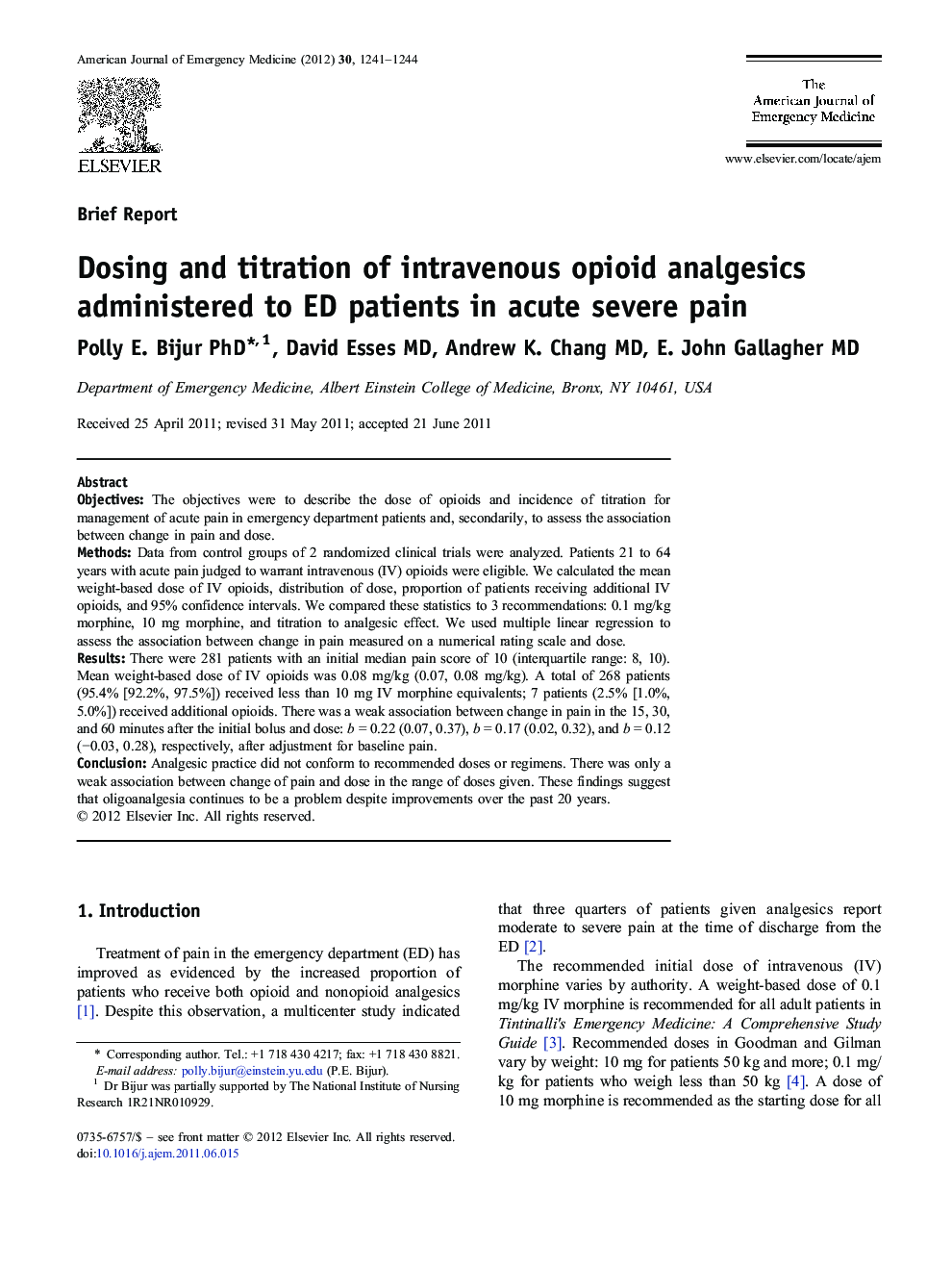| Article ID | Journal | Published Year | Pages | File Type |
|---|---|---|---|---|
| 3225256 | The American Journal of Emergency Medicine | 2012 | 4 Pages |
ObjectivesThe objectives were to describe the dose of opioids and incidence of titration for management of acute pain in emergency department patients and, secondarily, to assess the association between change in pain and dose.MethodsData from control groups of 2 randomized clinical trials were analyzed. Patients 21 to 64 years with acute pain judged to warrant intravenous (IV) opioids were eligible. We calculated the mean weight-based dose of IV opioids, distribution of dose, proportion of patients receiving additional IV opioids, and 95% confidence intervals. We compared these statistics to 3 recommendations: 0.1 mg/kg morphine, 10 mg morphine, and titration to analgesic effect. We used multiple linear regression to assess the association between change in pain measured on a numerical rating scale and dose.ResultsThere were 281 patients with an initial median pain score of 10 (interquartile range: 8, 10). Mean weight-based dose of IV opioids was 0.08 mg/kg (0.07, 0.08 mg/kg). A total of 268 patients (95.4% [92.2%, 97.5%]) received less than 10 mg IV morphine equivalents; 7 patients (2.5% [1.0%, 5.0%]) received additional opioids. There was a weak association between change in pain in the 15, 30, and 60 minutes after the initial bolus and dose: b = 0.22 (0.07, 0.37), b = 0.17 (0.02, 0.32), and b = 0.12 (−0.03, 0.28), respectively, after adjustment for baseline pain.ConclusionAnalgesic practice did not conform to recommended doses or regimens. There was only a weak association between change of pain and dose in the range of doses given. These findings suggest that oligoanalgesia continues to be a problem despite improvements over the past 20 years.
